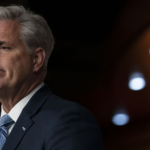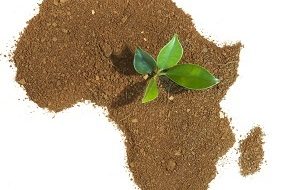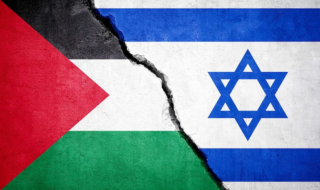
The Ngamia 3 oil exploration site in Nakukulas Village, Turkana South Sub-County, on July 13, 2014. Oil could earn Kenya at least Sh66 billion a year in sales and windfall tax. PHOTO | BILLY MUTAI | NATION MEDIA GROUP
Oil could earn Kenya at least Sh66 billion a year in sales and windfall tax. A new report released this week, “Potential Government Revenues from Turkana Oil”, estimates the reserves at 600 million barrels of recoverable oil and the first production to start in 2021, with a production span of 20-plus years.
The report estimates a barrel to cost Sh4,500 and assumes that production will peak in 2025 and 2030.
Windfall tax is levied on companies that will benefit from the Sh400 billion crude pipeline and its oil when the price per barrel is greater than the set threshold of Sh5,000.
Oil production is, however, expected to gradually decline after hitting a high note. The report states that if the global price of oil per barrel hits Sh6,600, Kenya could earn even more, about Sh172 billion annually.
Global oil prices have in recent times hit a 12-year low, selling at around Sh3,000 a barrel, a situation that has discouraged investments. But on Friday the price per barrel was steady at Sh4,400, a few cents above the previous day’s close (Thursday).
The current global oil price is not far from the report’s estimates — at Sh4,500 a barrel. This implies that the current situation could favour Kenya if production begins soon.
But if the price per barrel falls further, that would not, in the long run, be beneficial to Kenya because the revenue earned would be minimal. Higher oil prices attract better revenues for oil exporting countries.
The estimates on Kenya’s expected revenue from oil resources are based on the government’s production sharing contract with investor Tullow Oil. The report states that Kenya’s earnings will come from oil profit and windfall tax, with more revenue flowing in through the government’s right to acquire equity stake in the project.
600 MILLION BARRELS
The report is compiled by Resources for Development Consulting, Cordiad, Timu and the Civil Society Platform on Oil and Gas, among others.
From the in-depth analysis, oil prices will have a profound impact on the volume of revenue flowing into both national and sub-national governments.
As part of Kenya’s production plans, the first phase of development will allow for production of around 50,000 barrels a day.
The second phase will follow four years later, allowing production of an estimated 120,000 barrels a day.
“We assume somewhat higher levels of production based on the contingent reserve estimates published by Africa Oil, with the first phase peaking at 75,000 barrels a day and the second phase at 150,000 barrels a day,” says the report.
Challenges highlighted by the report include evacuation of only 600 million barrels, which would earn less compared with what the government stands to get if it joins hands with Uganda.
The World Bank had highlighted this fact, urging the government to stop being upbeat through its “Kenya Economic Memorandum” report. The global finance body stated that Kenya’s oil deposits were “too low” to boost economic growth when compared with Nigeria and Libya, which have vast oil resources.
“By comparison, Saudi Arabia produced about 11.5 million barrels of oil per day in 2012. At that speed of production, Kenya’s reserves would be depleted in only 52 days,” said the World Bank.
However, Kenya Pipeline Corporation chairman John Ngumi said South Sudan and Ethiopia could use Kenya’s crude pipeline as an export point. Indeed, Port Sudan on the shores of the Red Sea could be shut down if the current political turmoil continues. This could force South Sudan to seek alternative options.
HUGE INVESTMENT
Kenya and South Sudan have a memorandum of understating (MoU) signed in 2012, ensuring that at some point the possibility of transporting oil through Lamu is studied.
According to Ngumi, the Kenyan pipeline through the north is a huge investment since it could be extended to Ethiopia. “Since the existing Ethiopia pipeline is a product pipeline, it would make logical sense to extend the Kenyan one to serve Ethiopia when the need arises.”
The ‘Potential Government Revenues from Turkana Oil’ report also sees a big challenge in the remoteness of the discovery sites (deep in Lokichar). The researchers say this favours the pipeline as the only viable option.
The report disputes the government’s plan to begin transporting 600 million oil barrels through truck and rail in a bid to speed up oil exports, though this option is treated as a short-term measure.
According to the report, the earliest that oil from Kenya can be exported is 2021, a scenario that Tullow Oil has also forecast. A final investment decision in 2017/18, at the earliest, will prepare the way for production.
The Toyota Tsusho report had said it would take a minimum three-and-a-half years to build the pipeline. This research paper backs the Toyota findings.
“The most important upcoming milestone for Turkana oil, therefore, is the final investment decision for both upstream operations and the pipeline. Assuming a positive decision is made in 2017, the earliest possible date for first exports through the pipeline would be late 2021.”
Source: Daily Nation /LILIAN OCHIENG’
















